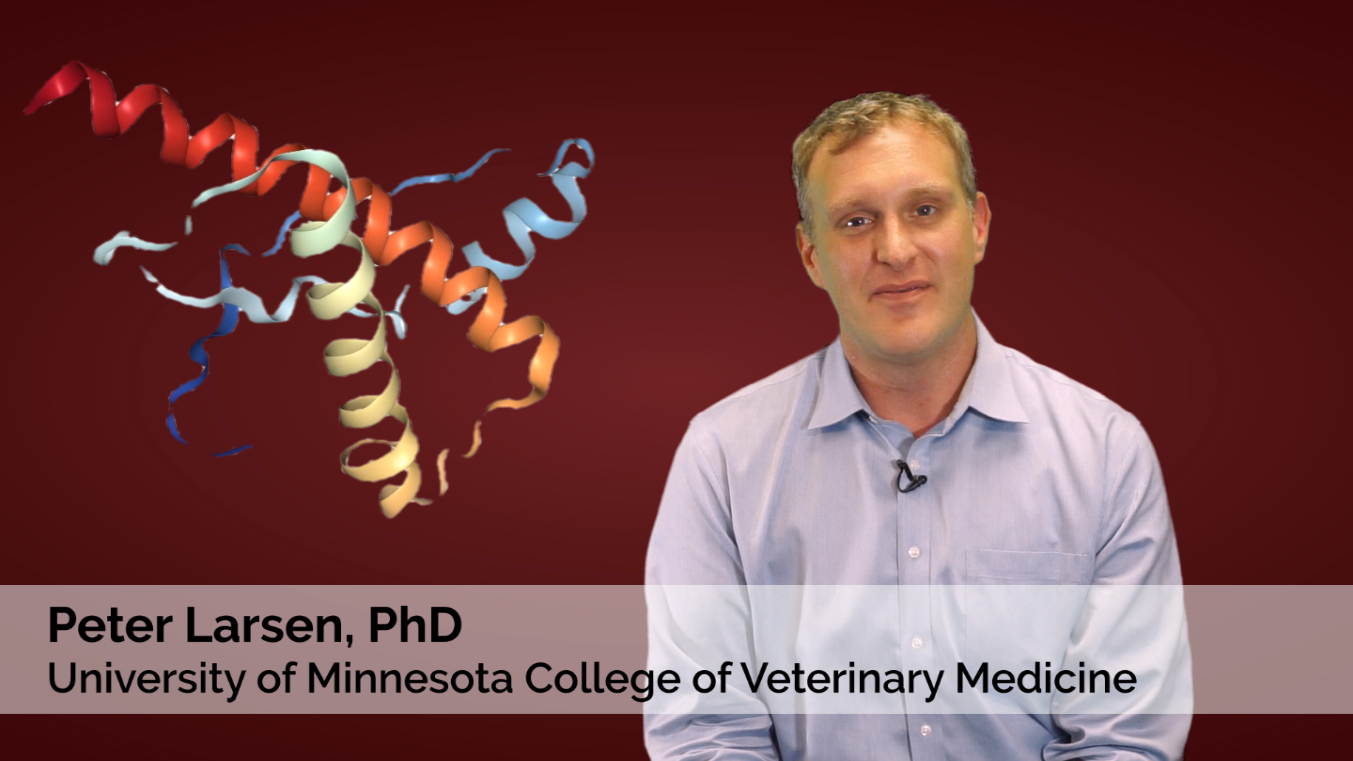
Peter Larsen, PhD, is an assistant professor in the College of Veterinary Medicine Department of Veterinary and Biomedical Sciences. He is leading the formation of the Minnesota Center for Prion Research and Outreach (MNPRO) within the U of M College of Veterinary Medicine. MNPRO faculty and staff will be dedicated to devising innovative technologies and strategies to combat the spread of CWD in Minnesota, neighboring states, and beyond.
Dr. Larsen's research will be featured at the upcoming Bell Museum event on Saturday, September 14: Spotlight Science: Chronic Wasting Disease
Why is it so important for Minnesotans to learn about and recognize the symptoms of CWD in cervids? CWD is one of the most challenging diseases we’ve ever faced. In large part, it’s because the CWD prions are nearly indestructible and can exist in the environment for years. Early detection and removal of a CWD positive animal from the environment will help to reduce the spread of CWD in our state. Anyone who spends time outdoors — bird watchers, dog walkers, cross-country skiers, hikers, hunters, etc. — can help curb CWD by recognizing symptoms and reporting sick animals to the Minnesota Department of Natural Resources.
What would you like people to know about CWD? CWD is not a “zombie disease”, it is a neurodegenerative condition that is threatening multiple deer species. Labeling CWD as a zombie disease causes unnecessary fear. We must all work together to protect deer heritage and to implement the CWD control measures as specified by the Minnesota DNR and Board of Animal Health.
What does the research say about the possibility of chronic wasting disease transmitting to humans? It is important to understand that there is currently no evidence that CWD can be transmitted to humans. Nevertheless, the CDC recommends that we do not eat CWD positive meat because we do not know whether or not the CWD prions will ultimately infect humans in the future. One of the primary reasons our team is working to develop new CWD diagnostic tools is to prevent CWD meat from entering our food supply.
What is the U of M College of Veterinary Medicine doing to study and stop CWD? The only way we can stop the spread of this disease is by understanding where and how these CWD prions are spread and which animals are carrying the disease. The first step is by creating real-time diagnostic tests like the ones we are developing at MNPRO. MNPRO faculty will ultimately work on a wide variety of CWD related projects, with research focused on the removal of CWD prions from the environment and CWD therapeutics.
What drew you to study chronic wasting disease? CWD is part of a spectrum of neurodegenerative diseases that originate from protein-misfolding events, and my postdoctoral research focused largely on the origin of protein-misfolding events observed in Alzhiemer’s disease.
How are CWD and Alzheimer's disease related? There are fascinating connections between Alzheimer’s disease and CWD that remain to be explored, and a component of my research program at UMN will focus on those connections. One of the most exciting aspects that our diagnostic development team is exploring on CWD is that diagnostic tools that are being developed for Alzheimer’s disease and Parkinson’s disease can be repurposed for CWD diagnostics.
To learn more about CWD research and outreach, join us for Spotlight Science: Chronic Wasting Disease on Saturday, September 14 at the Bell Museum. z.umn.edu/BellCWD
